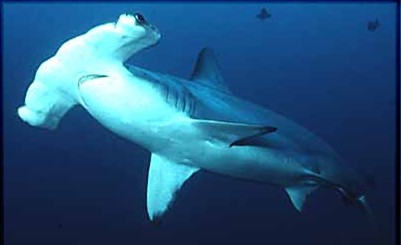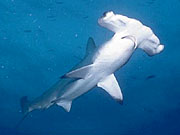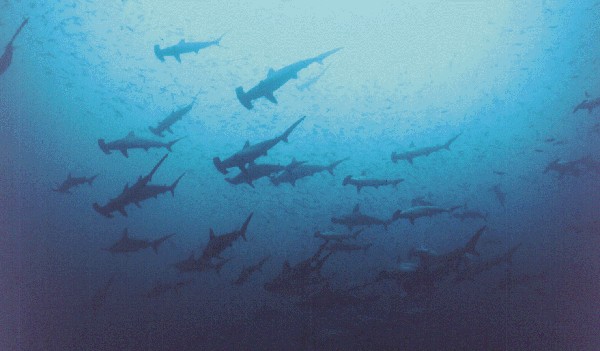

 GENERAL DESCRIPTION
The great hammerhead shark has a wide, thick head with the eyes at the margins. The head is indented
at the center of the "hammer," which is almost rectangular in shape. This shark is gray-brown above
with an off-white belly. The first dorsal fin (the large fin on the top of the shark that most
people associate with sharks) is very large and pointed.
GENERAL DESCRIPTION
The great hammerhead shark has a wide, thick head with the eyes at the margins. The head is indented
at the center of the "hammer," which is almost rectangular in shape. This shark is gray-brown above
with an off-white belly. The first dorsal fin (the large fin on the top of the shark that most
people associate with sharks) is very large and pointed.  MIGRATION
MIGRATION